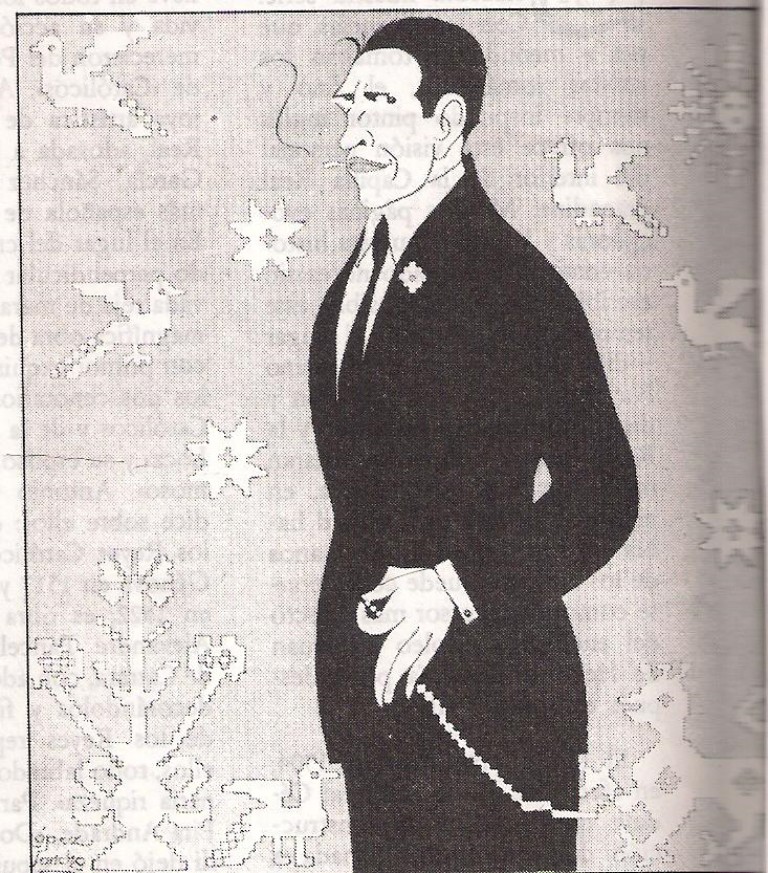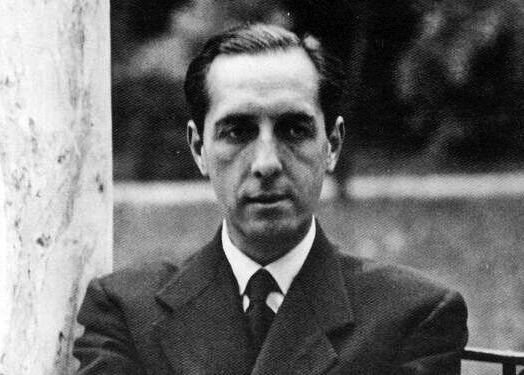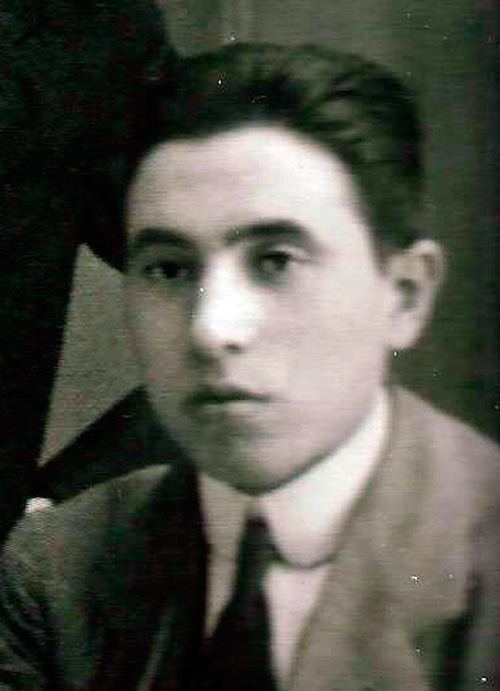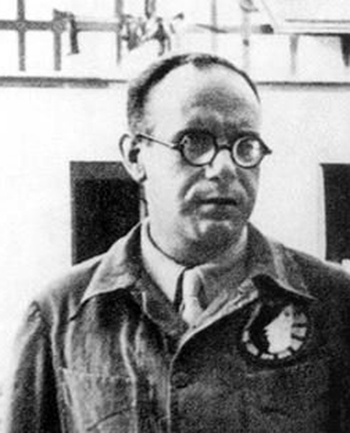Painter, cartoonist and caricaturist born in the Realejo neighborhood of Granada in 1891 and who died in the same city on July 23, 1959. He belonged to a family dedicated to textile craftsmanship. After training at the School of Fine Arts in Granada in 1915 he went to Madrid with the purpose of making a niche for himself as a caricaturist and illustrator in one of the many humorous and social life magazines of the time. On his return, in 1917, he joined El Rinconcillo frequented by García Lorca, Manuel de Falla, Juan José Santa Cruz and Fernando de los Ríos. In 1922, at the request of the intellectuals who promoted the Flamenco Song Contest, he made his best-known work: a drawing with 31 caricatures of the main participants in the contest held in the Plaza de los Aljibes on June 13 and 14 and won by Diego Bermúdez, El Tenazas, and the young Manolo Caracol. At the end of the 1920s, he gave up drawing for a living and returned to the family textile company, although he never completely abandoned his artistic collaborations. After several family calamities, in 1932 he began to collaborate as a cartoonist in the newspaper Ideal, of the Catholic Publishing House, which meant an ideological change that led him, during the Civil War, to paraphrase in his collaborations the brutal radio speeches of Queipo de Llano and to attack characters who had been part of his circle of friendship, such as Fernando de los Ríos, according to the book by María Luisa Hernández Ríos Antonio López Sancho, humor and melancholy (Granada, 1985).
In 1922, he paints the collective caricature of the Flamenco Song Contest. After the proclamation of the Republic, he collaborates with his nephew Manuel Maldonado in the recovery of the caricatures.
López Sancho only attended basic studies. He was a student of the peculiar Sagrado Corazón School, owned by Joaquín Alemán, relative of Vicenta Lorca, which was also attended by the brothers Federico and Francisco García Lorca. In 1904, he studied at the School of Fine Arts in Granada, directed by Manuel Gómez Moreno, where he began painting and drawing.
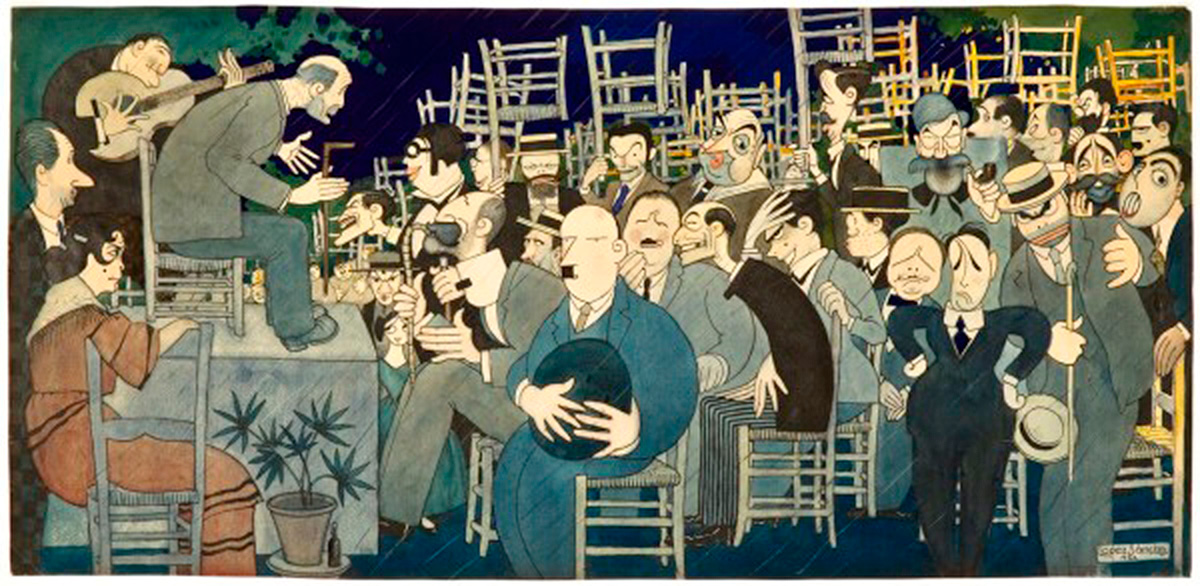
German satirical magazines swayed him towards graphic humor. His first drawings appeared in the regenerationist publications Andalusia (inspired by the magazine España by Ortega y Gasset) and in Granada, a publication directed by Alberto Álvarez de Cienfuegos in which Constantino Ruiz Carnero, Miguel Pizarro, José Fernández-Montesinos, Fernando de los Ríos and Gregorio Martínez Sierra collaborated.
In Madrid he met cartoonists such as Penagos and Luis Bagaría, with whom he established a very close friendship. He is attracted to national political humor and humor inspired by the Great War. His drawings, in Art déco style and of great chromatic splendor, also appear in La Esfera (the great publication of the time dedicated to social life), in Mundo gráfico and Nueva España.
Despite the commissions he receives, he is about to throw in the towel. He was saved by the Calleja magazine, which commissioned him to illustrate 200 stories that were distributed in Latin America.
The family, who continued with their textile business, forced him to return to Granada and abandon his Madrid adventure in 1917 with the excuse of the illness of one of his brothers. Although Bagaría urges him to collaborate from Granada with El Sol or Buen Humor, he ends up giving in to life in the provinces. Sancho resumed his relationship with the Centro Artístico, which was to last forever, and frequented El Rinconcillo. After a lecture by Fernando de los Ríos, he collaborates in a group exhibition to raise funds for the “starving children of Russia”.
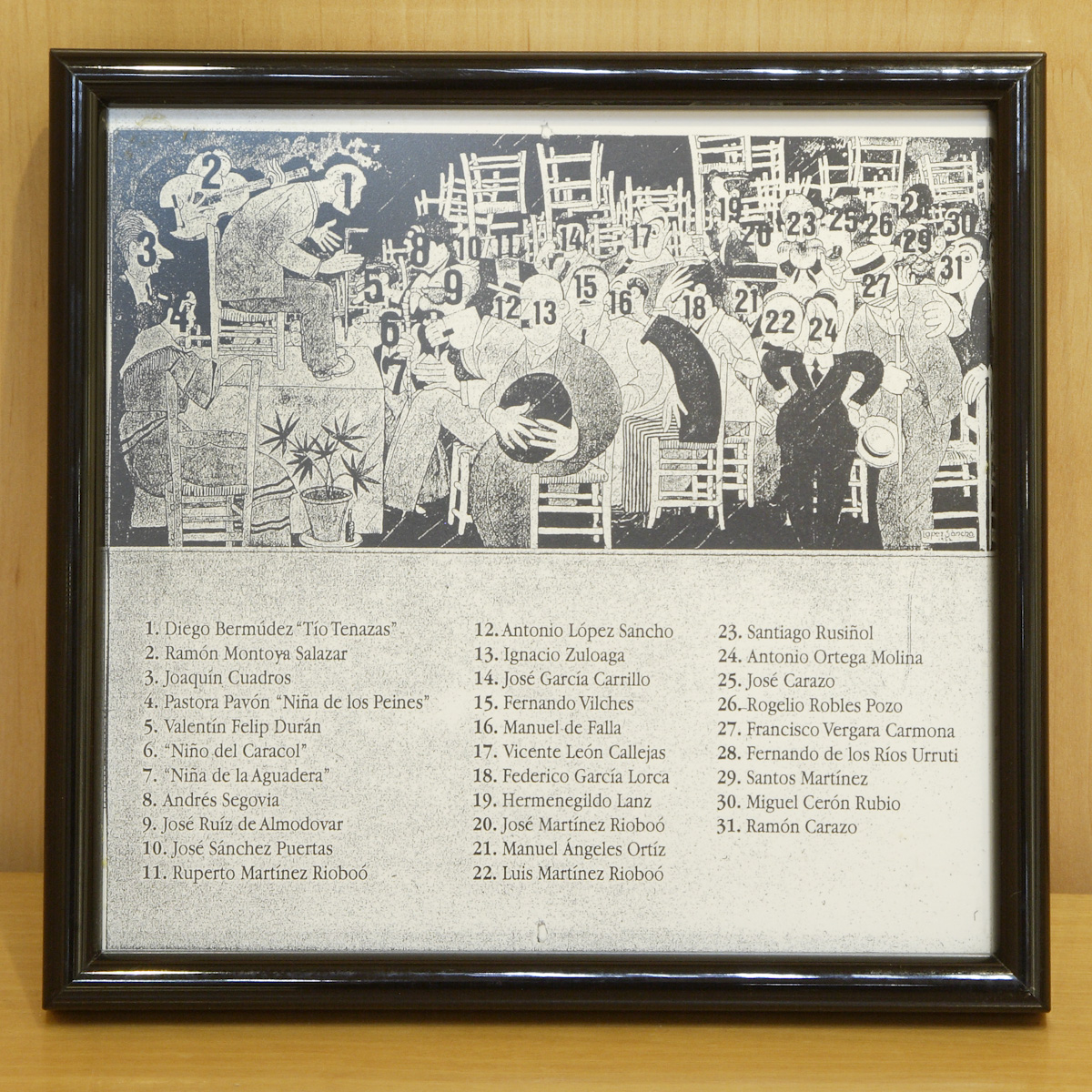
In 1922, he paints the collective caricature of the Flamenco Song Contest. The appearance of Reflejos, a local magazine with social echoes, opened the path of graphic journalism for him again. He was appointed artistic director, a position he held until 1926, when he decided to take over the family textile company, Fábrica la Granadina, for which he prepared several designs. Before that, he organized a tribute to Bagaría in Granada.
The Civil War turns him into a fanatical defender of the rebels and he takes as a reference for his drawings the invectives of Queipo de Llano.
Two mishaps come his way: a complaint for usurpation of a patent and the suicide of two of his brothers, the first one because of a female employee of the factory for whose attention he was disputing. He marries in 1931 and, after the proclamation of the Republic, he collaborates with his nephew Manuel Maldonado in the recovery of the caricatures.
In 1932, he began to draw for the Catholic and anti-republican newspaper Ideal. Sancho, although conservative, had been unbiased in his graphic jokes, but the Civil War turned him into a fanatical defender of the rebels. Perhaps to erase the traces of his old friendships (Ruiz Carnero, the engineer Santa Cruz, the president of the Diputación de Granada, Virgilio Castilla, and García Lorca, all of them assassinated in 1936) Sancho takes as a reference for his drawings the invectives of Queipo de Llano who, shortly before, had sent a message; “Drawers of white Spain: there you have a motive!”.
After the end of the war, the virulent attacks ceased and he opted for a costumbrist humor at the service of power. In 1942, Eduardo Molina Fajardo admitted him to the staff of the Falangist newspaper Patria.
He died of a lung disease in 1959.
